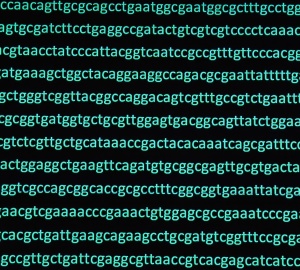
Over the last two decades, the world of DNA sequencing has evolved at an astonishing pace. Since the initial human genome project, which took years and billions of dollars to complete, modern instruments now deliver entire genome sequences within a single day. These advances have made sequencing faster, cheaper, and more accessible than ever before.
As sequencing platforms become more sophisticated, researchers face new choice - particularly between short-read and long-read sequencing. While short-read technologies have dominated the genomics landscape for years, long-read platforms are increasingly viable due to improvements in affordability, throughput, and accuracy. Choosing the right sequencing technology now depends on more than just coverage and cost - it depends on which read length is best equipped to answer the scientific question at hand.
Short-read sequencing: reliable, scalable, and cost-efficient
Short-read sequencing remains the cornerstone of most next-generation sequencing (NGS) labs. By generating millions - or even billions - of high-quality DNA reads just a few hundred base pairs in length, short-read technologies offer a powerful, cost-effective means of capturing genomic data. These platforms excel in high-throughput applications such as:
- Variant detection (e.g., SNPs and small indels)
- Transcriptome profiling (RNA-seq)
- Targeted gene panels
- Low-pass whole genome sequencing
- Microbial genome sequencing
- Plasmid and vector quality control
Major players like Illumina, Ion Torrent, and newer entrants such as Element Biosciences, Ultima Genomics, and PacBio Onso continue to push the boundaries of read quality and throughput. However, despite different underlying chemistries, all short-read systems are constrained to relatively small read lengths.
These scalable platforms demand equally efficient sample preparation. As instruments scale into the realm of thousands of gigabases per run, traditional library prep becomes a limiting factor. Challenges like sample normalisation and insert size consistency can create bottlenecks and impact data quality.
SeqWell solutions for short-read library prep
To overcome these challenges, seqWell offers streamlined library prep technologies purpose-built for short-read sequencing:
- plexWell™: integrates multiplexing and normalisation into a single-tube workflow, delivering highly uniform libraries without the need for tedious quantification or pooling.
- ExpressPlex™: offers ultra-fast, transposase-based library construction for 100s to 1000s of samples with minimal hands-on time - ideal for high-throughput environments.
- MosaiX™: A versatile library prep solution engineered for flexible and consistent results across a wide range of input types and NGS applications, including metagenomics and targeted resequencing. MosaiX is particularly useful when custom insert sizes and robust performance across diverse sample types are needed.
These kits help researchers harness the full potential of modern short-read sequencers by reducing manual steps, lowering costs, and maximizing data quality.
Limitations of short reads
Despite their strengths, short-read technologies struggle with sequencing repetitive or structurally complex regions of the genome. Fragmentation and PCR amplification introduce assembly biases and can lead to incomplete reconstructions - especially in highly polymorphic or repetitive areas. This limitation is particularly problematic in de novo assembly or structural variant (SV) detection.
Long-read sequencing: powerful insights from extended reads
Long-read sequencing technologies - led by PacBio and Oxford Nanopore Technologies (ONT) - have matured into reliable alternatives for resolving genomic complexity. These platforms can generate reads tens to hundreds of thousands of bases long, enabling applications such as:
- Detection of structural variants (SVs)
- Phasing of haplotypes
- Epigenetic modification profiling
- Full-length transcript isoform identification
- De novo genome assembly
Historically, long-read technologies were limited by lower throughput, higher error rates, and greater cost per base. Today, with innovations like PacBio HiFi, ONT PromethION, and PacBio Revio, the performance gap between short- and long-read sequencing is rapidly closing.
Accuracy has also improved substantially. PacBio’s HiFi reads deliver accuracy above 99.9%, and ONT has made major strides in real-time base calling performance. Meanwhile, long-read platforms provide a unique advantage in directly detecting base modifications, unlocking new layers of epigenetic information without the need for separate library prep protocols.
SeqWell solutions for long-read library prep
Preparing libraries for long-read sequencing brings its own challenges - chief among them, generating long, high-quality DNA fragments suitable for sequencing. Mechanical shearing and manual workflows can be inefficient and time-consuming.
To address these pain points, seqWell developed LongPlex™, a transposase-based library prep workflow tailored to long-read sequencing. Key benefits include:
- Enzyme-only workflow: eliminates the need for mechanical fragmentation.
- Sample multiplexing: supports 100s of samples, even in high-throughput settings.
- Simplified protocol: cuts down on labour and turnaround time.
LongPlex™ opens the door to broader adoption of long-read sequencing by reducing barriers to entry for labs with limited automation or specialised equipment.
The hybrid approach: combining strengths for optimal results
Increasingly, researchers are turning to hybrid sequencing strategies - combining short- and long-read data to achieve the best of both worlds. For example:
- Short reads provide depth, speed, and affordability for high-confidence SNP and small variant calling.
- Long reads layer in the structural and contextual information needed to fully understand genome architecture, including large SVs and phased haplotypes.
While this approach demands more advanced bioinformatics, it yields a richer, more comprehensive view of genomic data - especially valuable in de novo assembly, rare disease analysis, and complex trait studies.
The debate between short-read and long-read sequencing is no longer about which is better - it’s about what best fits your research goals. Short-read platforms deliver unmatched cost-efficiency and depth, while long-read technologies unlock deeper insights into genome structure, variation, and epigenetics.
Whichever path you choose, seqWell’s portfolio of optimised library prep solutions - from plexWell™, ExpressPlex™ and MosaiX™ for short reads, to LongPlex™ for long reads - empowers your lab to get the most from your sequencing investments.
